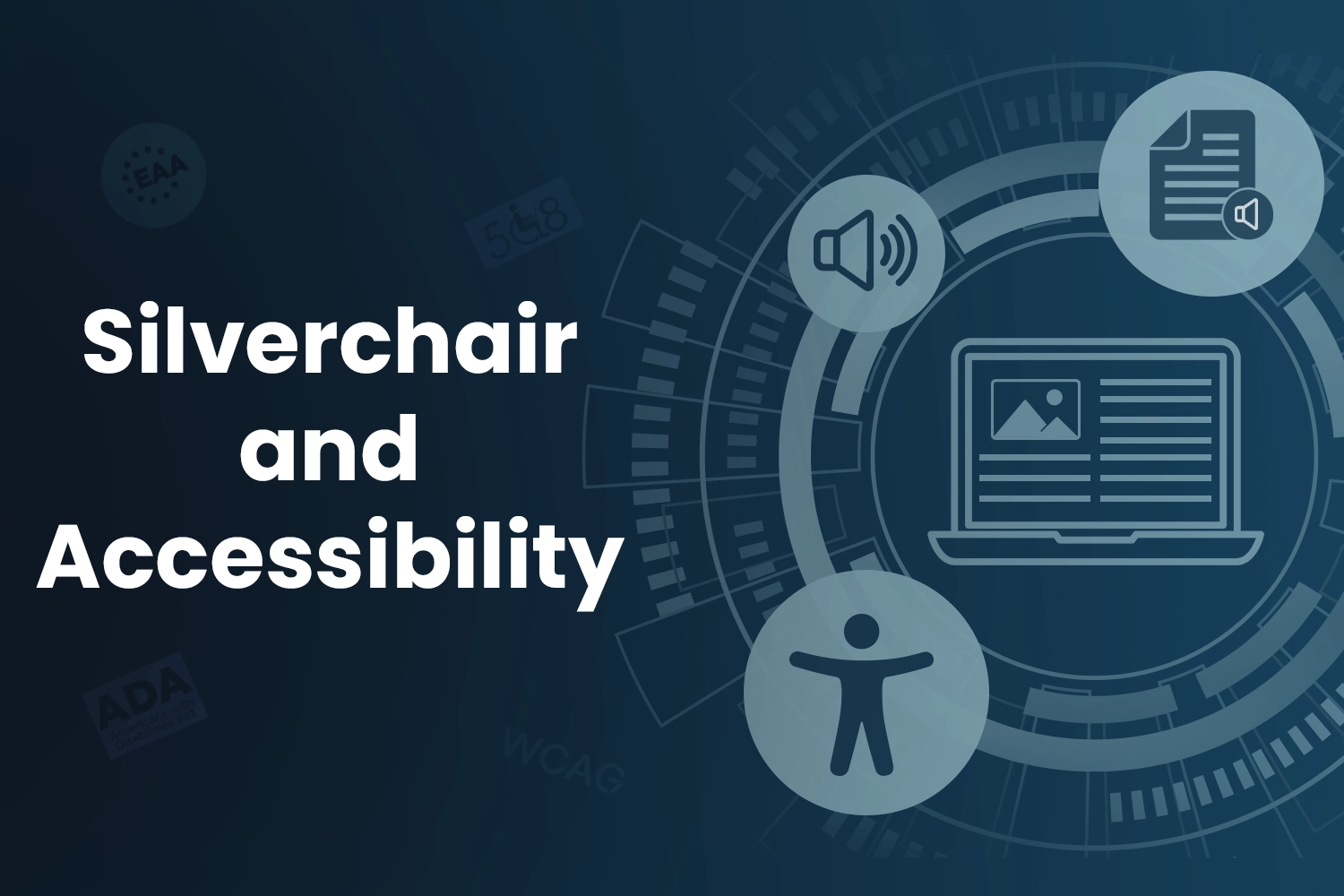
Silverchair and Accessibility
Introduction
Aisha, a graduate student, often spent late nights trying to read journal articles on her university’s publishing platform. With her screen reader, the experience was frustrating; images had no descriptions, tables were scrambled, and key buttons didn’t respond.
One evening, she returned to the same platform, but something was different. Navigation was smooth. Figures had clear descriptions. Her screen reader finally worked as intended. That moment wasn’t just about technology; it was about dignity and inclusion.
This is what happens when platforms like Silverchair embrace accessibility: a digital space becomes a welcoming and usable resource for every reader.
Silverchair’s role in scholarly publishing
Silverchair is now a standard in providing academic content. It drives online journals, scholarly portals, and professional resources. However, in today’s digital era, it is no longer a choice to provide accessibility. Accessibility is necessary for compliance and for connection.
Accessible publishing allows students such as Aisha, in addition to researchers who are visually impaired or professionals with mobility impairments, to access knowledge without difficulty. In the absence of accessible publishing, the vision of scholarly publishing to make knowledge available globally is unfulfilled.
Why accessibility matters now
Accessibility is not just about meeting regulations. It is about creating equal opportunities. Consider these key drivers:
- Legal and Ethical Stakes
Institutions have to be compliant with WCAG and Section 508 standards. But it’s more than regulations; it’s about being fair and not letting anyone fall behind.
- Reaching Wider Audiences
Physical or intellectual limitations do not constrain inclusive content. Accessibility increases readership and trust.
- Enhancing Discoverability
Structured metadata and alt text improve both usability and search rankings, amplifying content reach.
- Living the Mission
Academic publishing is about spreading knowledge. True to this mission, accessibility makes knowledge borderless and equitable.
Each point isn’t just a technical necessity; it’s a chance to create real impact, as Aisha’s story shows.
Here’s what Lapiz Digital: Partnering for accessible publishing had to say
Accessibility requires both expertise and empathy. That’s where Lapiz Digital adds value. Their publishing services extend far beyond formatting and production. With document remediation, alt-text writing, logical structuring, and accessibility audits, Lapiz ensures content on platforms like Silverchair is both compliant and meaningful.
For example, when a mid-sized publisher observed that reader complaints were on the rise, Lapiz stepped in. They fixed PDFs, wrote elaborate alt text for difficult figures, and made navigation easier. Soon, comments changed:
- “For the first time, I could download and read articles independently.” — Visually-impaired researcher
- “Navigation feels intuitive. I don’t need extra help anymore.” — Graduate student.
These testimonials highlight a truth: accessibility is as much about people as it is about technology.
Best Practices for accessibility on silverchair
Moving toward accessibility can feel overwhelming. Breaking it into clear steps makes the journey easier.
- Audit Content Early
Before uploading to Silverchair, publishers should check if PDFs, articles, and supplementary materials are accessible. A quick audit can save significant rework in the future.
Example: One publisher caught inconsistent heading structures before launch. Fixing them upfront avoided reader confusion.
- Prioritize Structure
Proper headings, labelled tables, and logical tab orders are the backbone of accessibility.
Scenario: A researcher navigating with a screen reader could move easily through a well-structured article, while another poorly structured file left them lost.
- Write Purposeful Alt Text
Alt text should explain not just “what” is shown but also “why” it matters.
Example: Instead of “Chart of revenues”, use “Chart showing steady revenue growth over five years, supporting the study’s conclusion of financial stability.”
- Ensure PDF Compliance
PDFs must meet WCAG and PDF/UA standards. Tools and manual checks make sure they work seamlessly with assistive technology.
- Work with Trusted Partners
Not all publishers employ in-house accessibility teams. Collaborating with experts like Lapiz Digital provides scale and quality as well as compliance.
These are not technical milestones; these are bridges to inclusion.
Coming back to readers journey
When platforms like Silverchair integrate accessibility, readers like Aisha gain not only access to content but also confidence, independence, and equal participation in academia.
For Aisha, accessibility meant finishing her research without struggles. For publishers, it means living their mission. For the academic world, it represents progress that includes everyone.
Conclusion
Silverchair is powerful. But with accessibility, it becomes transformative. Together with partners like Lapiz Digital, publishers can ensure that scholarly content not only exists online but also thrives as an inclusive and equitable resource for every reader.
Because in the end, accessibility isn’t about technology. It’s about people. And every reader, like Aisha, deserves a seat at the table of knowledge.